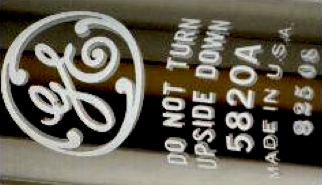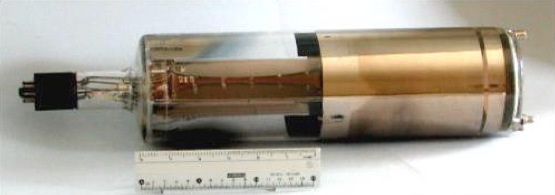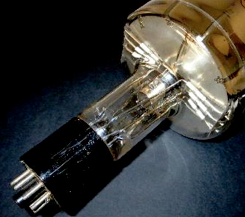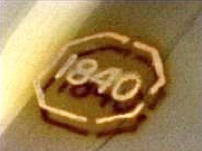The “Orthicon” and the 3” “Image Orthicon” T.V. Camera Tubes
Ref. L9









Dependable T.V. fluoroscopy became possible only after RCA introduced in 1945 the “Image Orthicon” pick-up tube, the “5820”, a direct descendent of the huge short lived “Orthicon” pictured below (successor of the “Image Dissector” and of the “Iconoscope”), to which a photo-multiplier section was added, highly increasing its sensitivity to low light levels. The Image Orthicon (often referred to as the “IO”) was described as “being able to take pictures even by candle light”. It cost then about $1500 and had a life span of only 400 to 600 hours, reaching its quality peak at about 300 to 400 hours*.
The Image Orthicon tubes pictured above, respectively made by General Electric and by the English Electric Valve Company, date probably to the fifties and early sixties. The photo-multiplier section is visible near the base in the GE tube, and hidden in the black section of the tube by English Electric.
For X-ray fluoroscopy, the standard 3” Image Orthicon tube, some 15”(38 cm) long, was generally used in conjunction with massive and expensive mirror-optical amplifier systems (e.g. The CINELIX, as seen in an advertisement by N.V.Optiche Industrie “De Oude Delft”). For professional television, a still bigger Image Orthicon was later developed, the massive 4.5” IO, 20”(50cms) long. (See bottom picture, a comparison with the 3” IO).
Image Orthicon fluoroscopy systems became obsolete by the introduction in the fifties, equally by RCA, of the Vidicon T.V. pick-up tube, and later on of the Plumbicon pick-up tube, for use in conjunction with electronic Image Intensifiers. Image Orthicons were totally abandoned in the seventies.
*From an article by Don Hallock
View this interesting article.